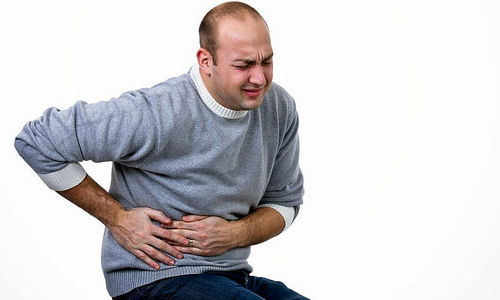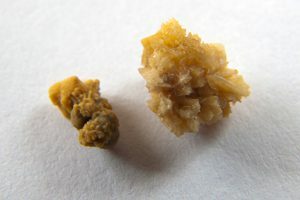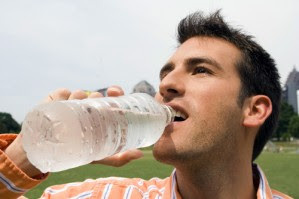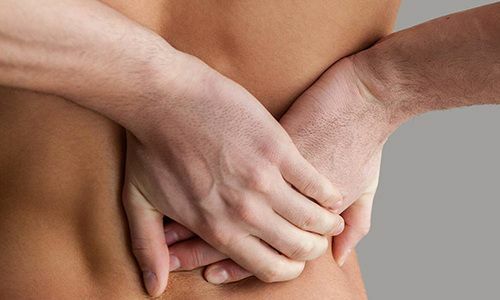You can remove stones from the kidney by various methods. Selection of therapy is carried out after determining the characteristics of urolithiasis. The main value is the size. If neoplasms are large, many inference methods are ineffective. They can cause irreparable harm. Home remedies can only be used after consultation with the treating specialist. It is not recommended to use such tools uncontrolled.

Etiology of the disease
Urolithiasis often affects the body of modern men. The causes of this ailment are different. The disease is often accompanied by the accumulation of plaques in the pelvis. Plaques are formed under the action of various chemical elements. Several types of kidney stones are recognized:
- Oxalates;
- Phosphates;
- Urates.
Oxalates are considered to be the most complex types of stones. They consist of oxalic acid and calcium salts. These tumors have a rough surface. Sharp edges can damage the tender epithelium of the renal pelvis during movement. For this reason, this urolithiasis is often accompanied by the appearance of blood in the urine. Oxalates have a light color.
 Urates are a more mild form of urolithiasis. These stones have a dense structure and a flat surface. The color of urate can range from dark yellow to brown. The basis of urate is uric acid. When the acid is combined with calcium fibers, a small suspension in the urine occurs. Microparticles accumulate on the epithelium of the kidney. There is a small plaque. Further adhesion of microparticles leads to the formation of dense urate.
Urates are a more mild form of urolithiasis. These stones have a dense structure and a flat surface. The color of urate can range from dark yellow to brown. The basis of urate is uric acid. When the acid is combined with calcium fibers, a small suspension in the urine occurs. Microparticles accumulate on the epithelium of the kidney. There is a small plaque. Further adhesion of microparticles leads to the formation of dense urate.
A dangerous disease is considered to be a kidney damage with phosphate stones. Phosphates are involved in the formation of coral neoplasms in the pelvis. Corals can lead to blockage of the ureter. The kidney channel stops working. A person needs surgery. The basis of these neoplasms is calcium phosphate. Stones are even, have a light color.
Causes of the pathological process of
Kidney stones are formed under the influence of various negative factors. The following phenomena can become the cause of urolithiasis:
- Water consumption in small volumes;
- Climatic living conditions;
- Inflammation of the urogenital organs;
- Kidney damage from injuries;
- Abuse of different types of alcohol;
- Incorrect power selection.
The main reason for the accumulation of suspended matter in the urine is low fluid intake. Various drinking drinks, such as coffee, tea or juices in the total amount are not included. Drink clean drinking water. If its consumption is reduced, there is a stagnation of trace elements in the renal pelvis. They form microparticles, which are involved in the construction of stones.
It has been found that urolithiasis is often found in people living in hot and warm climates. Such living conditions affect the work of various body systems.
 Heat affects the rise in body temperature. To reduce these indicators, it is necessary to increase the flow of the lymphatic fluid. Lymph exudes water through sweat glands. It helps to lower the temperature. Against the backdrop of this process, there is a lack of water in the kidneys. It ceases to fully carry out various products of disintegration through the pelvis. Due to this feature in the body, the substances necessary for the construction of stones accumulate.
Heat affects the rise in body temperature. To reduce these indicators, it is necessary to increase the flow of the lymphatic fluid. Lymph exudes water through sweat glands. It helps to lower the temperature. Against the backdrop of this process, there is a lack of water in the kidneys. It ceases to fully carry out various products of disintegration through the pelvis. Due to this feature in the body, the substances necessary for the construction of stones accumulate.
Negative influence is exerted by various inflammations of the urogenital organs. Pathology is accompanied by rapid spread. If a pathological process gets into the cavity of the organ, a disruption of the epithelium occurs. He stops sucking the salt. They accumulate in the renal pelvis. Salts provoke urolithiasis.
The patient's diet should also be considered. Many people have certain nutritional preferences. Individual foods contain substances that cause the disease. The problem is often observed in the preference of dairy, vegetable or berry dishes.
How to recognize the disease
Pathology is revealed when the characteristics of urine change. It changes its color. The color scheme depends on the salts that are present in it. Also, with oxalate, a small amount of blood can be detected.
Other characteristic signs of kidney stones are also observed. A person has pain syndrome in the lumbar zone. The intensity of pain depends on the activity of a person. Strengthening is observed when urinating. The rest of the time the symptom is accompanied by a pulling sensation.
Large stones are blocked by the urethra or renal duct. Such a process occurs when a stone hits the urinary tract. In this case, a person can not fully empty the bubble. Requires medical intervention.
Types of treatment for the disease
Urolithiasis can be eliminated by various methods. The removal of stones is carried out after determining its type, shape and size. There are allocated methods for removing stones, such as:
-
 Operating delete;
Operating delete; - Medication therapy;
- Conservative methodology;
- Home Recipe.
The operation for removing stones has long been practiced in many medical centers. Surgical techniques are used such as: contact and non-contact. Non-contact removal is carried out using a laser nozzle or ultrasonic treatment. Also, the operation is carried out through different paths. Many centers use the operation - laparoscopy. Laparoscopy is performed by a surgical incision over the affected area. The incision does not exceed 1 cm. A tube is inserted into the resulting aperture, which enters through the envelope of the kidney into the pelvis. A laser nozzle is inserted into the tube. Crushing is performed without strong damage to the shell of the organ. Remains of stone are removed through the tube. Recovery of the patient in this case occurs quickly. The operation is painless.
Less traumatic for the patient is the endoscopic destruction of the stone. This technique is not used in all centers. It requires certain skills and experience from a specialist.
Surgical treatment is performed without punctures and tissue incisions. The endoscopic tube is inserted into the urinary tract through the urethral canal. Through the urinary tract, the endoscope enters the renal duct. Through the duct, the tube penetrates into the pelvis. The stone is crushed by a laser nozzle on an endoscope. The stone is crushed to the smallest parts. Trauma of the organ with this method of exclusion is excluded. The operation is performed under local anesthesia. Excretion of sand is carried out with the first urination.
There is also a usual surgical intervention. To remove a stone, a person is injected into general anesthesia. The soft tissue is cut above the affected organ. The part of the kidney is also cut. Through the resulting wound, the stone is removed from the body. Further patient recovery may take from 14 to 20 days. But this type of operation is rarely used.
 If a patient is diagnosed with urate damage, he is prescribed medication. To remove the neoplasm from the pelvis, the patient is recommended to take drugs that enhance diuresis. This therapy increases the permeability of fluid through the kidneys. The liquid seizes particles of salts and removes them from the body. Constant consumption of diuretics allows the stone to crumble. Particles of the formation are excreted through the urinary system.
If a patient is diagnosed with urate damage, he is prescribed medication. To remove the neoplasm from the pelvis, the patient is recommended to take drugs that enhance diuresis. This therapy increases the permeability of fluid through the kidneys. The liquid seizes particles of salts and removes them from the body. Constant consumption of diuretics allows the stone to crumble. Particles of the formation are excreted through the urinary system.
It should be noted that this method of elimination is contraindicated in people with low diastolic pressure. When prescribing this therapy, you should consult your doctor. Self-administration of such drugs can lead to a strong drop in pressure and worsen the overall condition of the patient.
Conservative technique is to select the necessary products and increased fluid intake. The average volume of water consumed should be 2.4-3 liters. It should consist of clean drinking water. Such treatment will help quickly remove the suspension from the pelvis. After eliminating excess salt, the stone is gradually destroyed. Excretion is by natural means.
To remove stones from the kidneys will help and the selection of necessary products. Different salts accumulate due to certain products. The reason for urate is excessive consumption of vegetables and fruits. Oxalates are observed in the abuse of berries and acidic foods. Phosphates are detected in lovers of dairy products. Depending on the variety of urolithiasis, it is necessary to eliminate the cause of its appearance from the diet.
You can also remove stones with different home methods. Before starting such treatment it is necessary to visit a specialist. He will allow or prohibit this therapy. Many patients use diuretic herbs to remove the stones. These include a sheet of birch, bearberry and cowberry. Sometimes a mixture of these plants is used. The recipe for the manufacture of infusion should be strictly observed. It is also necessary to get acquainted with the contra-indications of individual components of the infusion. If the product is not suitable for any indication, then its use is prohibited.
Pathology poses a danger to human health and life. If the patient has noticed characteristic signs of urolithiasis, he should seek help from a specialist. The doctor will tell you how to remove the stones from the kidneys.



